DIS2 featured in CORDIS Results in Brief
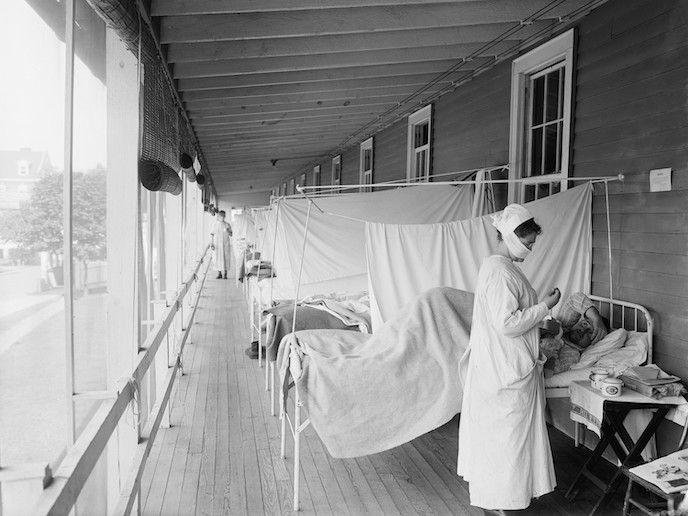
Read more here:

Read more here:
I was interviewed about my research on disability during the 1918 flu and its relevance for today. Read “How vulnerable groups were left behind in pandemic response” by Richard Gray here:
https://horizon-magazine.eu/article/how-vulnerable-groups-were-left-behind-pandemic-response.html
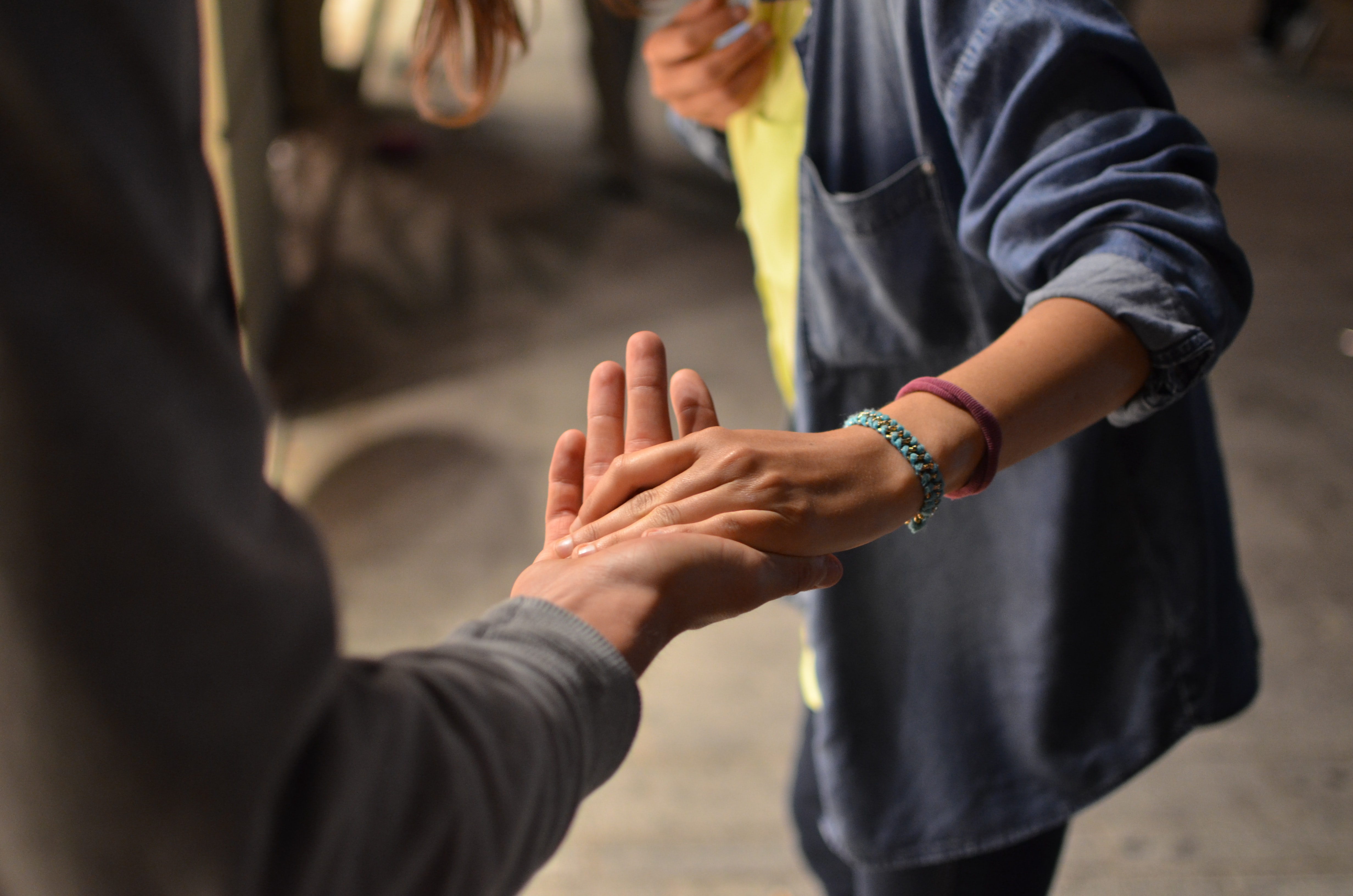
Last week, I presented my project on disability as a risk factor during the 1918 pandemic for the webinar series of the Centre for Research on Pandemics & Society. Watch the video here:
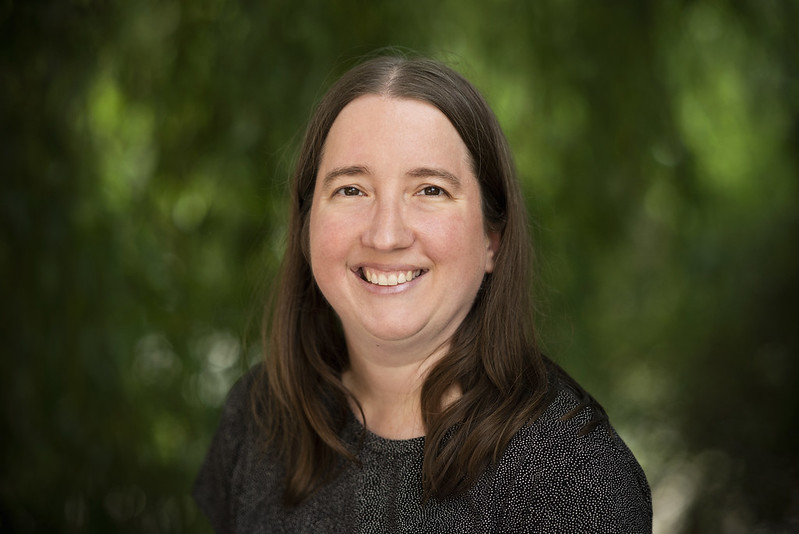
I noted several sources that helped determine disease values used in the simulation model (and similar models for Newfoundland communities – see work by my PhD supervisor, Lisa Sattenspiel, and our colleagues). These sources include:
“‘An Avalanche of Unexpected Sickness’: Institutions and Disease in 1918 and Today.” Chelsea Chamberlain. June 23, 2020. Society for Historians of the Gilded Age and Progressive Era. https://www.shgape.org/an-avalanche-of-unexpected-sickness/
Ferguson, N. M., Fraser, C., Donnelly, C. A., Ghani, A. C., & Anderson, R. M. (2004). Public health risk from the avian H5N1 influenza epidemic. Science, 304(5673), 968–969. https:// doi.org/10.1126/science.1096898
Mills, C. E., Robins, J. M., & Lipsitch, M. (2004). Transmissibility of 1918 pandemic influenza. Nature, 432, 904–906. https://doi.org/10.1038/nature03063
Almost two years after I last sat down with Hallvard Lavoll and the Viten og snakkis podcast, we met again to talk about my project. Take a listen here: https://vitenogsnakkis.oslomet.no/2021/05/14/researching-a-pandemic-during-a-pandemic/
COVID-19 has shown that people with disabilities are at increased risk of severe illness and death during pandemics. Interacting biological and social factors likely contribute to these differences. For example, risks are especially high for those living in institutions.
Yet, few researchers have studied the experiences and outcomes of disabled people during past pandemics, including the 1918 influenza pandemic. As part of the webinar series of the Centre for Research on Pandemics & Society at Oslo Metropolitan University, Jessica Dimka, Ph.D., will present the main results of her Marie Skłodowska-Curie fellowship in her talk, “Disability, Institutionalization, and the 1918 Flu Pandemic: From Historical Records to Simulation Models.”
Key points of the talk include:
The talk will conclude with a discussion of the relevance of this work for COVID-19 and future pandemics, including areas of future research, policy implications, and the disabling effects of pandemics.
For a Zoom link, please contact jessicad@oslomet.no or masv@oslomet.no
The talk will be in English, and International Sign interpretation is arranged. For general questions about the webinar including accessibility concerns, please contact jessicad@oslomet.no or ninha@oslomet.no

It’s fair to say that this year has not been what I was expecting or hoping for, and I’m sure that is true for most people. However, I am grateful that my family has remained healthy and that I have been able to work safely from home.
Some of my plans and timelines for this project have changed, of course. But I also have had the opportunity to co-author several articles, now in various stages of review, connecting historical pandemics to COVID-19 and addressing issues of inequality and preparedness. I am excited to share those when they are ready.
Meanwhile, I’ve been working on making sense of historical records from Sweden. My preliminary analyses suggest there were differences in 1918 flu mortality outcomes between people with and without recorded disabilities, but these are clearer to spot when considering people noted to be in institutions vs. the whole population. While I have remaining analyses to do, these findings reinforce the importance of the physical environment and social attitudes in pandemic outcomes when it comes to disabled people.
I also have drafted the complete model code for my agent-based model. The image below is the appearance of the “world” at the start of a simulation, depicting staff and students in a school for children with disabilities. The schedule of activities and other details are based on archival material for a number of such schools in early 20th century Norway, especially Holmestrand School for the Deaf. The code needs to be carefully tested first, but hopefully soon I will be able to start analyses. Ideally, this model will not only improve our understanding of how diseases spread within institutions but also be a tool for testing how well potential interventions might work.
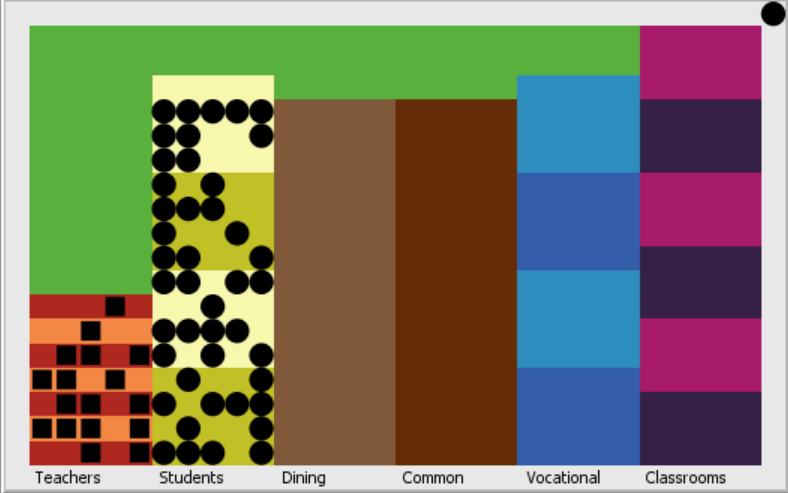
Image description: Map of the model school. Social spaces appear as rectangles of different colors, and they include boarding rooms for staff and students, the dining room, a common room, vocational classrooms and teaching classrooms, as well as external grounds. At the start of a model run, staff (squares) and students (circles) are in their bedrooms, most of which are shared. One student is in the upper right corner, reflecting the fact that usually a small number of students lived or boarded outside of the schools.
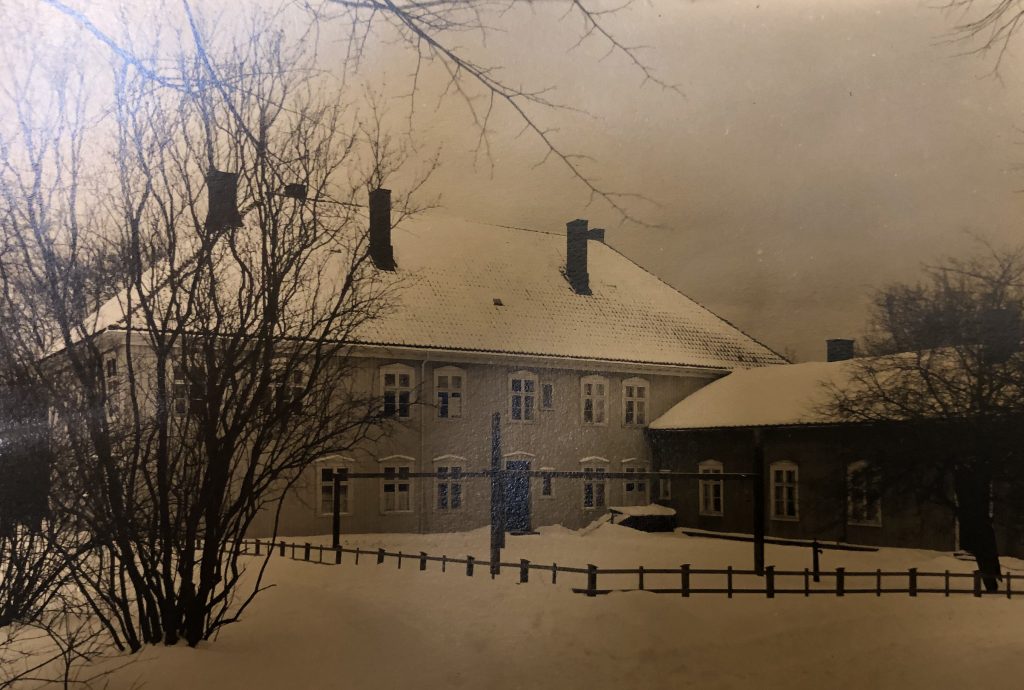
Image description: An external view of Holmestrand School for the Deaf, showing a large building with a smaller extension and fenced grounds covered in snow. Date unknown, although the picture is sepia-tinted and the folder at the archives contained material from 1899-1943. Held at the National Archives of Norway (RA/S-1021/F/Fh/Fhp/L0061 – Holmestrand off. skole for døve).
I am definitely looking forward to the next stages of this project, and I hope everyone has a much better new year than the last one!